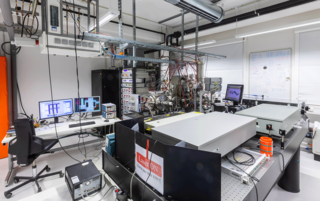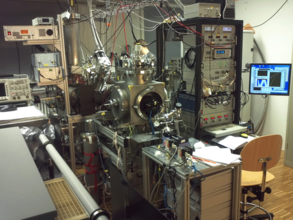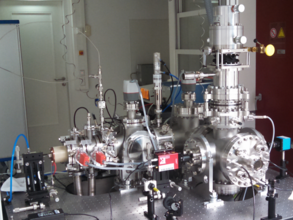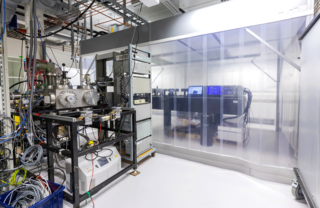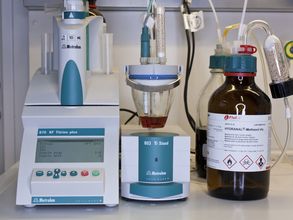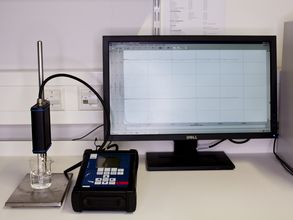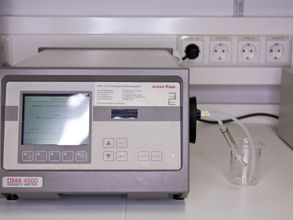For 20 years, we have been developing mass spectrometric and laser spectroscopic research methods and the worldwide unique, tailor-made instruments to go with them.
Methods
In single nanoparticle mass spectrometry (NPMS), a single, charged nanoparticle in the kDa to GDa mass range is trapped in a Paul trap and the mass/charge (M/Q) ratio is optically determined as a function of environmental conditions (temperature, pressure, adsorption gas) quasi-continuously and non-destructively with a mass precision of up to ppm.
In single nanoparticle action spectroscopy (SNAS), photoabsorption is measured indirectly by determining the photoinduced changes in the M/Q ratio of the nanoparticle. Inert adsorbate molecules (e.g., N2 or Ar) serve as messengers of photoabsorption, similar to IRPD spectroscopy in the gas phase. Photoabsorption leads to an increase in the internal energy of the nanoparticle. This additional energy can be dissipated by desorption of messenger molecules from the nanoparticle surface, leading to a decrease in the (absolute) mass of the NP.
The low number density of mass-selected ions in the gas phase, which can usually be achieved in ion trap experiments (<108 cm-3), makes direct absorption experiments difficult. Therefore, vibrational spectra of mass-selected clusters in the gas phase can typically only be measured using action spectroscopy, in particular photodissociation spectroscopy. Either IRMPD (infrared multiple photon dissociation) spectroscopy on (bare) cluster ions or IRPD spectroscopy on ion-messenger complexes is used. While the former approach is easier to apply and the only one possible at higher temperatures, the latter approach provides better resolved spectra. The IRPD method typically yields photodissociation yields that reflect the linear absorption cross section, which greatly simplifies comparison with predicted IR absorption spectra from quantum chemical calculations.
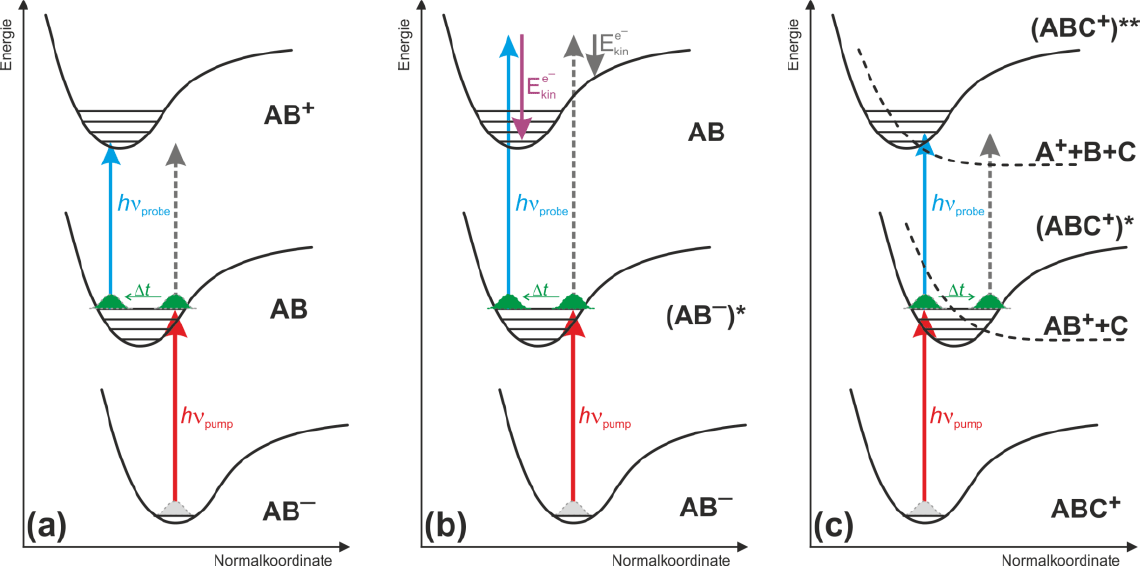
Spectroscopic studies of gas-phase clusters are often limited by the cluster size distribution present. To ensure an unambiguous characterization of the signal carrier, methods starting from mass-selected ions are particularly suitable.
- fs-NeNePo spectroscopy. Here, mass-selected anions AB- are photoionized and transferred to the neutral charge state AB using the first fs laser pulse. The wave packet dynamics are then interrogated using the time-delayed probe pulse by photoionizing and transferring the system to the AB+ cationic charge state. Measurement of the mass-selected photocation current as a function of delay time then yields the fs-NeNePo spectrum.
- fs anion photoelectron spectroscopy. This is a powerful method to study ultrafast, especially non-adiabatic processes on an electronically excited state of the anion in a time-resolved manner. Here, the time evolution of the wave packet dynamics is followed by the generation of a free photoelectron by means of the time-delayed probe pulse. Nowadays, the photoelectron imaging technique has become established for this purpose, in which the kinetic energy as well as the angular distribution of the photoelectrons is detected simultaneously.
- fs-cation photodissociation spectroscopy. This allows to study the wave packet dynamics in excited electronic states of cationic clusters, where further photoionization into dication is typically not energetically accessible. Here, an initial ultrashort UV laser pulse is used to populate a dissociative electronically excited state of the cation. The time-delayed probe pulse, typically in the visible or near-IR region, then alters the fragmentation behavior by providing additional internal energy and opening additional fragmentation channels, so that the two-color ion signal provides time-resolved insight into the lifetimes of the electronic states involved as well as the nature and time scales of the redistribution processes that ultimately lead to fragmentation.
